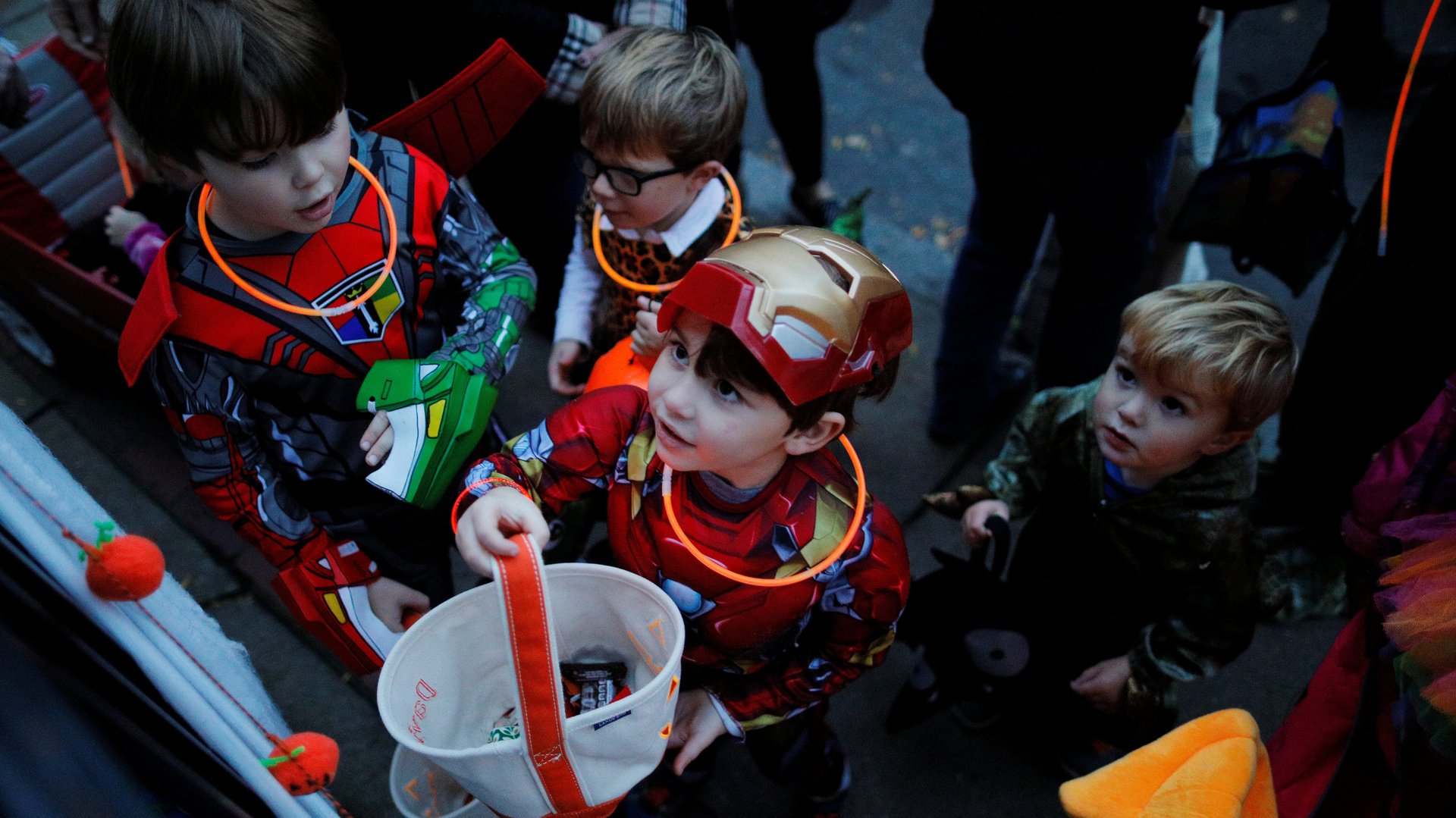Zoom parties, throwing candy: How Halloween might happen during Covid-19
Covid-19 has ruined countless birthdays, school vacations, and even the back to school season. As the pandemic stretches into the North American autumn, some are determined to not let it ruin Halloween—even though celebrating the holiday might come with risk.


Covid-19 has ruined countless birthdays, school vacations, and even the back to school season. As the pandemic stretches into the North American autumn, some are determined to not let it ruin Halloween—even though celebrating the holiday might come with risk.
Halloween may be fun, but it’s also serious business. American spent an estimated $9 billion on the holiday in 2018, according to Vox. Hershey makes 10% of its approximately $7 billion in annual US sales around Halloween, according to a company spokesperson; in 2013, the CEO of Spirit Halloween raked in about $125 million, about half the annual revenue for its parent company, Spencer Gifts, its CEO told Forbes.
Those industries are doing what they can to encourage people to spend like they might have without a pandemic. Earlier this week, several companies and associations launched Halloween2020.org, a website that offers recommendations about how to have a safer Halloween.
The site features a map of Covid-19 risk levels created by the Harvard Global Health Institute and offers suggestions and ideas that claim to adhere to the US Centers for Disease Control and Prevention (CDC) social distancing guidelines.
The map, which has been in circulation since early July and is regularly updated, expresses the risk of Covid-19 infection in one of four colors. Depending on their county’s risk level, the website proposes variations on the classic door-to-door trick-or-treat.
Kids who live in counties with a yellow risk level, for example, which equates to 1 to 10 daily cases per 100,000 people, could have treats thrown at them, go on a drive-through candy sweep, or participate in a neighborhood costume parade. Or they could limit their trick-or-treating destinations to houses that have promised to uphold guidelines like wearing a face covering, marking spots six feet apart leading up to their door, and not handing out candy if they’re sick.
But the website’s suggestions aren’t the same as public health recommendations. The public health department in Los Angeles County, for example, has banned (pdf) Halloween parties and does not recommend door-to-door trick-or-treating. Currently, the county would be considered in the yellow zone on the Halloween2020 map, with 8.3 new Covid-19 cases per 100,000 people each day.
Indeed, there’s little more up-to-date guidance, at least on the national level. In August a bipartisan group of lawmakers asked the CDC to issue an updated guidance on best Halloween practices to prevent the spread of Covid-19; on Sept. 21, the agency complied. In the interim, individual districts—and companies—created policies on their own.
The association-led website’s ideas are at least inventive. For higher-risk counties, it suggests a “reverse trick-or-treat” (having the neighbors deliver candy to them), or a Zoom party (candy buckets dropped off in advance). Older celebrants might do a neighborhood pub crawl or see the Rocky Horror Picture Show at the drive-in.
“We are on a mission to ensure the safest Halloween celebration possible this year and want to make sure families and communities have access to the best, up-to-date guidance that prioritizes community safety,” Kevin Johnson, chairman of the Halloween & Costume Association (one of the organizations behind the site’s launch), said in a press release.
This story was updated with information about the CDC’s newly released Halloween guidelines for Covid-19.